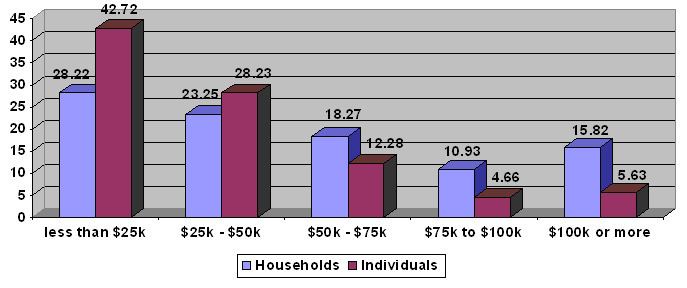 | ||
Income in the United States is measured by the United States Department of Commerce either by household or individual. The differences between household and personal income is considerable since 42% of households, the majority of those in the top two quintiles with incomes exceeding $57,658, now have two income earners.
This difference becomes very apparent when comparing the percentage of households with six figure incomes to that of individuals. In 2006, 17.3% of households had incomes exceeding $100,000, compared to slightly less than 6% of individuals. Overall the median household income was $46,326 in 2006 while the median personal income (including only those above the age of 25) was $32,140.
Income inequality in the United States has increased considerably. Between 1979 and 2004, the mean after-tax income of the top percentile increased 167%, versus 69% for the top quintile overall, 29% for the fourth quintile, 21% for the middle quintile, 17% for the second quintile and 6% for the bottom quintile. While wages for women have increased greatly, median earnings of male wage earners have remained stagnant since the late 1970s. Household income, however, has risen due the increasing number of household with more than one income earners and women's increased presence in the labor force. Half of the U.S. population lives in poverty or is low-income, according to U.S. Census data. On the other hand, some members of the U. S. population have earned a considerable income: the top earner in 2011, hedge fund manager John Paulson, earned $4.9 billion, according to Business Insider.
